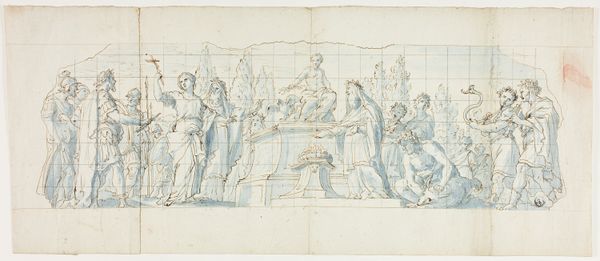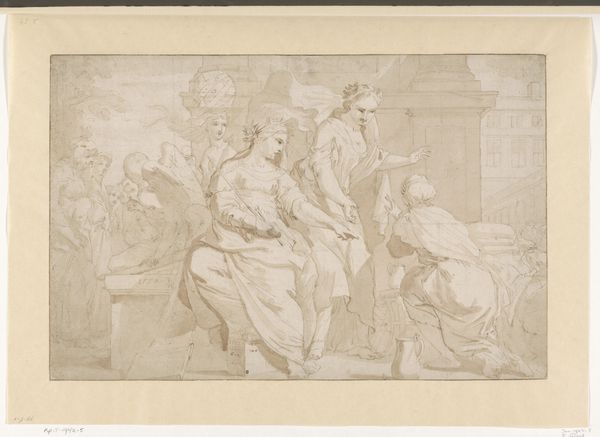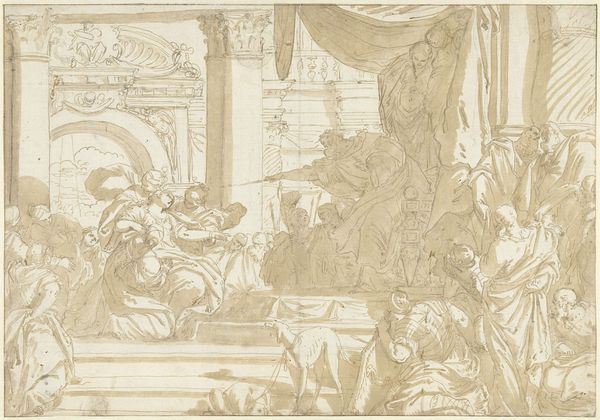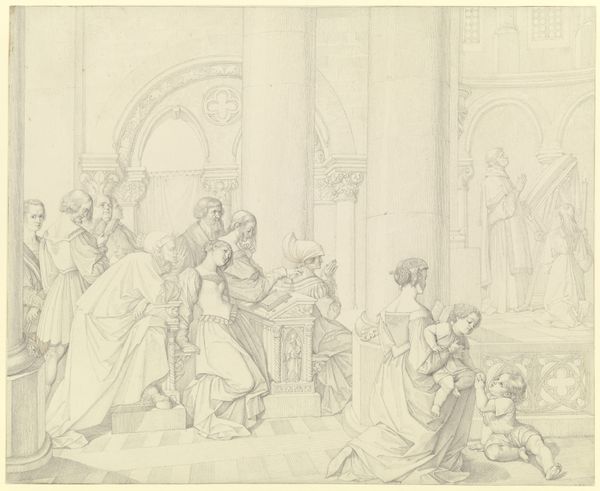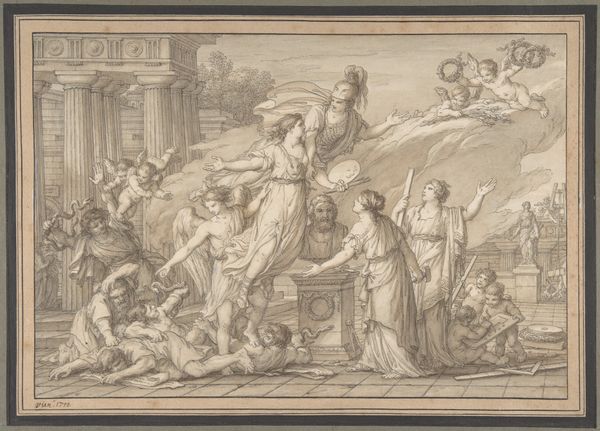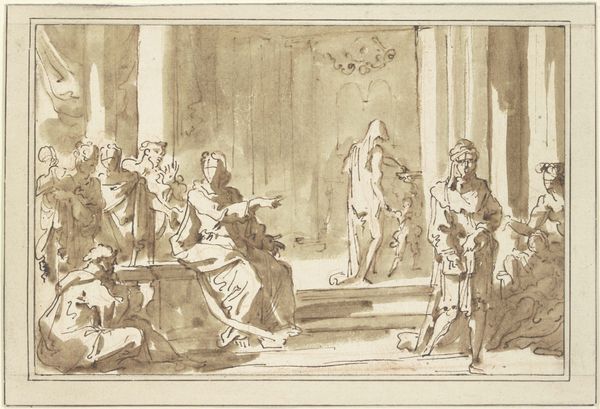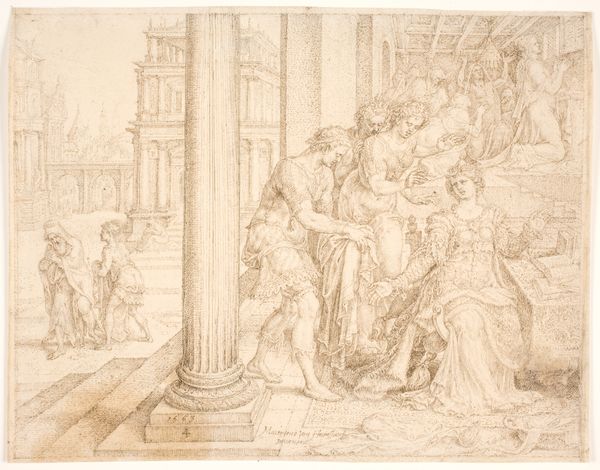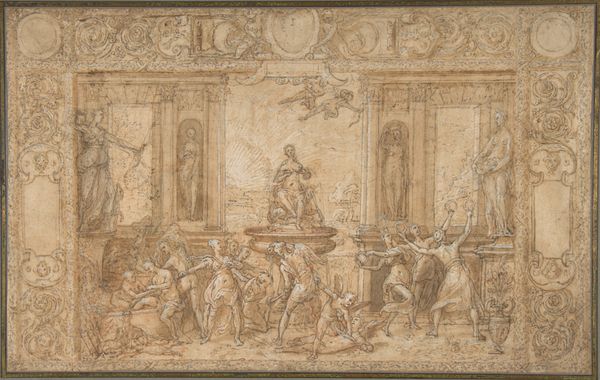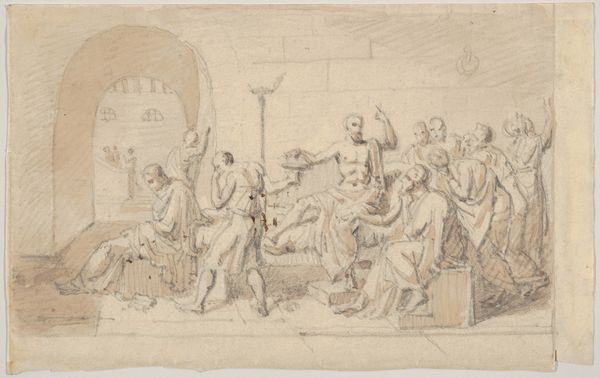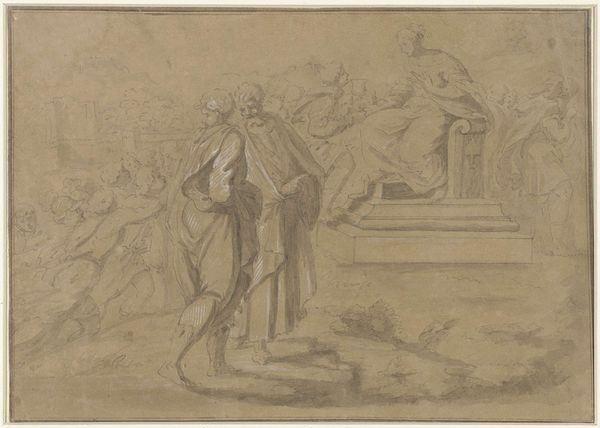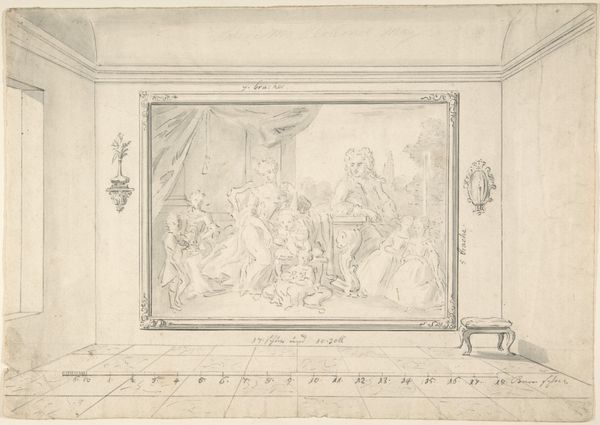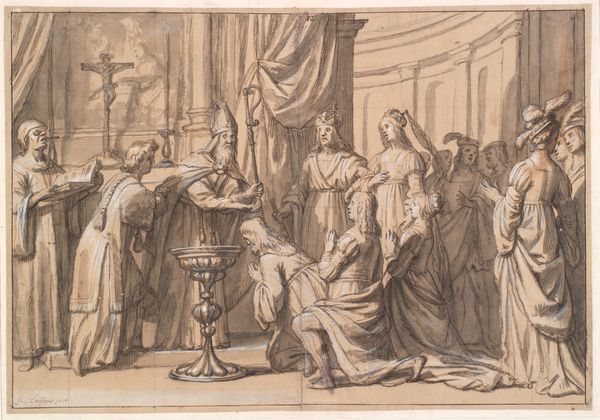
drawing, print, pencil
#
drawing
#
neoclacissism
#
narrative-art
# print
#
landscape
#
classical-realism
#
figuration
#
form
#
pencil
#
line
#
history-painting
#
academic-art
Dimensions: Sheet: 22 5/16 × 31 5/16 in. (56.7 × 79.5 cm)
Copyright: Public Domain
Editor: Here we have Augustin Pajou’s drawing, "Pyrrhus in the House of Glaucias," created sometime between 1747 and 1761. It's currently housed at the Met. It's such a delicate pencil drawing –almost like a ghost of a grand painting, wouldn't you say? What really strikes me is the composition, all these figures frozen in what looks like a very dramatic moment. What do you see in this piece? Curator: You've touched on something important there. It *is* like a ghostly premonition of a grander statement. This drawing, like so many Neoclassical works, draws inspiration from antiquity— both its style and its narratives. The scene itself comes from Plutarch, chronicling the story of Pyrrhus, who's brought as a child to King Glaucias for protection. But what interests me isn't just the story. It's the feeling, that hushed anticipation, almost as if the figures are posing for an ancient stage. Can you sense it? Editor: I do, actually, especially in the way they're all positioned looking at one specific point on the platform. It almost feels a bit theatrical. Curator: Precisely! And this is where it gets fun. The Enlightenment was all about reason, yes, but also about grand emotions, carefully orchestrated. Pajou uses the clarity of line, very characteristic of Neoclassicism, to convey that reason, while he stages the figures with great emotion like a scene from a tragic play. Think about the slightly exaggerated gestures, and everyone seems to be either pleading or presenting. Do you get a sense of where Pajou's sympathies lie? Is he making a statement or just depicting a well-known story? Editor: I’m not sure. It feels like there might be something he's hinting at, especially the slightly forlorn look of the young Pyrrhus. I almost want to know what happens next. Curator: And isn’t that the delicious part of history and art? It invites us to play detective, piecing together stories and emotions from a time long gone. It's more about asking the questions than finding definitive answers. Editor: It gives me a fresh way to look at not just the historical context, but the story behind the art. Thanks.
Comments
No comments
Be the first to comment and join the conversation on the ultimate creative platform.
